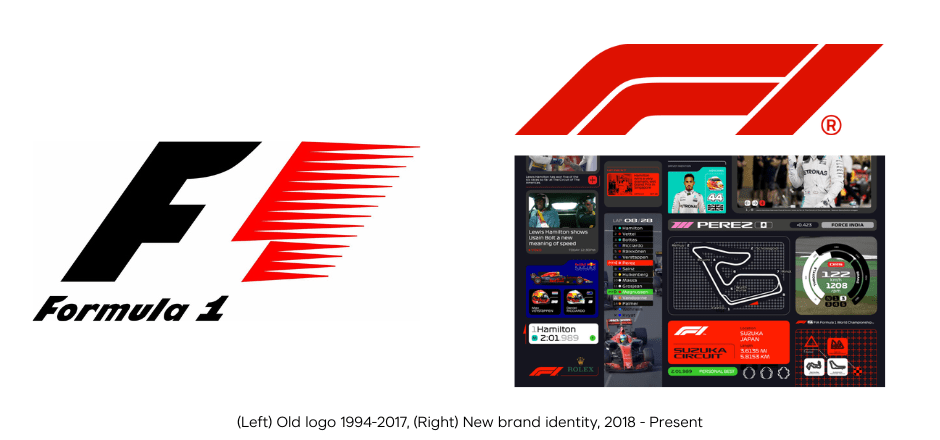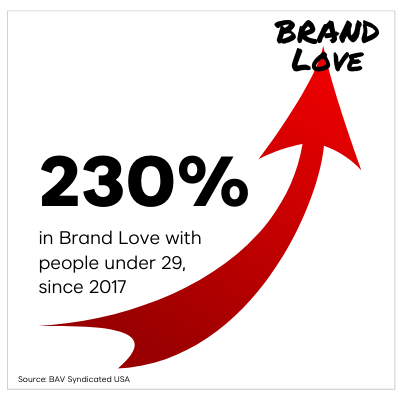Formula One: Racing to Iconic Status
03.14.2024

Racing to Iconic Status
With the 2024 Formula 1® racing season underway, let’s take a look under the hood of the brand underlying the sporting spectacle that’s taken the world by storm. The once Euro-centric sport is now a worldwide phenomenon reaching new highs, welcoming an entirely new generation of fans. 1 in 3 new fans started following the sport in the past 4 years, with an average age of 27, 10 years younger than the traditional F1 fan.
However, Formula One’s past serves as a stark contrast to today.
So, what changed?
Many might credit the rise of F1 to Netflix series Drive to Survive. However, for a brand to capitalize on a breakout content marketing success like Drive to Survive, other elements of its brand strategy must be there. That’s exactly what Formula One did in the two years prior to the show’s release, after the sport was taken under new ownership. The organization, which historically lacked dedicated marketing or digital teams, became a breakout success attracting a new generation of fans from across the globe.
Let’s break it down and see what drove the impact they have had on the sport, all through the lens of syndicated data from BrandAsset Valuator® (aka BAV®).
In 2016, the Formula 1 brand was non-existent among young people in the US and was seen as highly Unapproachable, according to BAV data. Former F1 boss Bernie Ecclestone was famously quoted saying he “would rather get to the 70-year-old guy who's got plenty of cash” than expand to a younger audience. It’s no surprise that the sport’s older fan base had not meaningfully evolved in years. To most, it was a highly technical European sport for the elite. It had no place in US motorsport, where NASCAR reigned supreme. In 2017, it was acquired and reorganized under US ownership by Liberty Media. Formula One set out to revitalize itself with a singular vision – to become a sport for everyone.
More than a New Logo

The first step in revitalizing the brand was giving it a modern look-and-feel. This exercise was more than just a visual rebrand, it sought out to give Formula One its first multi-dimensional brand identity. Until 2018, Formula 1’s brand identity was just its logo, and nothing more. The brand lacked distinctive assets that reinforced the speed, thrill, and engineering prowess that it represented. The new identity established consistency for Formula 1 and how it showed up across global broadcasts and other media channels, especially digital. Today, our data shows that its brand is 58% more distinctive than before the rebrand.
Getting the F1 Story Out There
Next, Formula 1 significantly shifted how it marketed the sport. Previously, its approach to the sport was narrow and focused on retaining its elite stature. Digital content was sparse, drivers were prohibited from sharing race content on social media. That all changed under new ownership. For the first time, Marketing, Digital and Promotion teams were set up to make the sport culturally relevant and engage a new generation of fans. The foundations were already there – Formula 1 had not changed as a sport. They just needed to get their story out there and give people a reason to connect with the sport.
Race content was ramped up across social channels and drivers were now encouraged to express themselves on social media and bring fans behind the scenes. The technical complexity of the sport was also addressed, with dedicated explainer series developed to help bring new fans into the sport. Formula 1 today has improved by 38% on BAV’s Simplicity metric, reflecting greater understanding and the ease with which new fans have joined the sport.

The result, a culturally iconic brand among young people. According to BAV data, Formula 1 is considered one of the coolest brands in culture among this cohort, with brand love increasing by 230% since 2017. The BAV PowerGrid captures this rise, going from unknown status to being in the Top 10% on Brand Strength, our leading indicator for a brand’s future potential and reflection of the energy and momentum it carries in culture.
By putting the right pieces together and building the right foundations Formula 1 capitalized on Drive to Survive’s success and sky-rocketed its growth in just a few years, putting on a masterclass of content marketing. It’s no wonder the show has been renewed for 6 seasons and has inspired other sports to grow their fanbase by adopting the same strategy, with series lined up for rival motorsports NASCAR and IndyCar, as well as tennis, golf, and football.

The ascendancy of Formula 1 is a lesson in brand evolution. No matter what category you compete in, ask yourself:
- Who is your current audience, and more importantly, who is not?
- What are the gaps between your audience today and the audience of tomorrow?
- Is there an audience waiting to fall in love with your brand that has simply not heard your story out there?
Want to understand how your brand has evolved
and what the opportunities are to expand?
Contact us to schedule a 30-minute complimentary session.
Author: Tanay Sharma, Manager Strategy & Insights
Tanay, who joined BAV Group in 2020, is fascinated by the role brands play in shaping businesses, consumer behavior, and culture at large, and works with clients to help them leverage quantitative and qualitative insights to craft purposeful brand strategies. Prior to joining BAV, Tanay worked in advertising and strategy roles at Snapchat and Ogilvy, where he helped brands establish relevance and tell compelling stories.
Tanay is a graduate of New York University with B.A in Economics and a minor in the Business of Entertainment, Media, and Technology. In his spare time, he loves to travel and explore different experiences and cultures.
Connect with Tanay on LinkedIn: https://bit.ly/tanay-sharma
